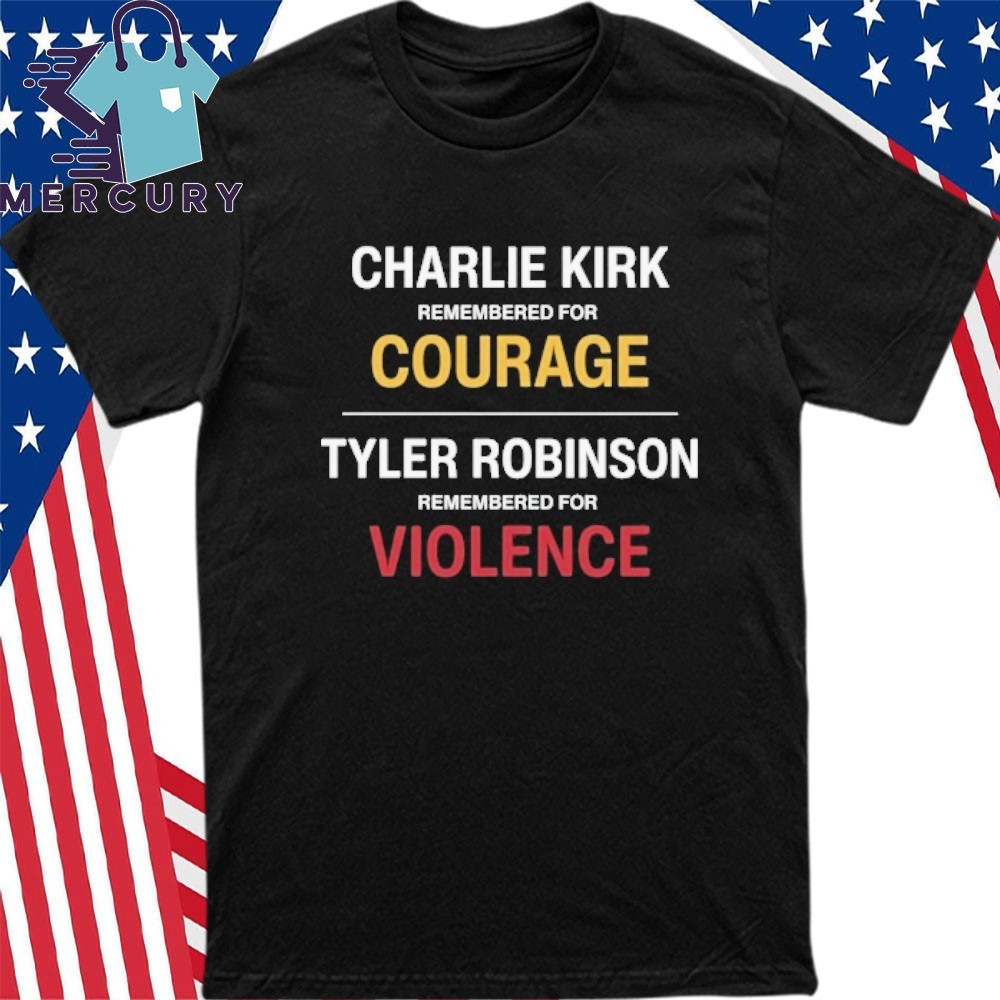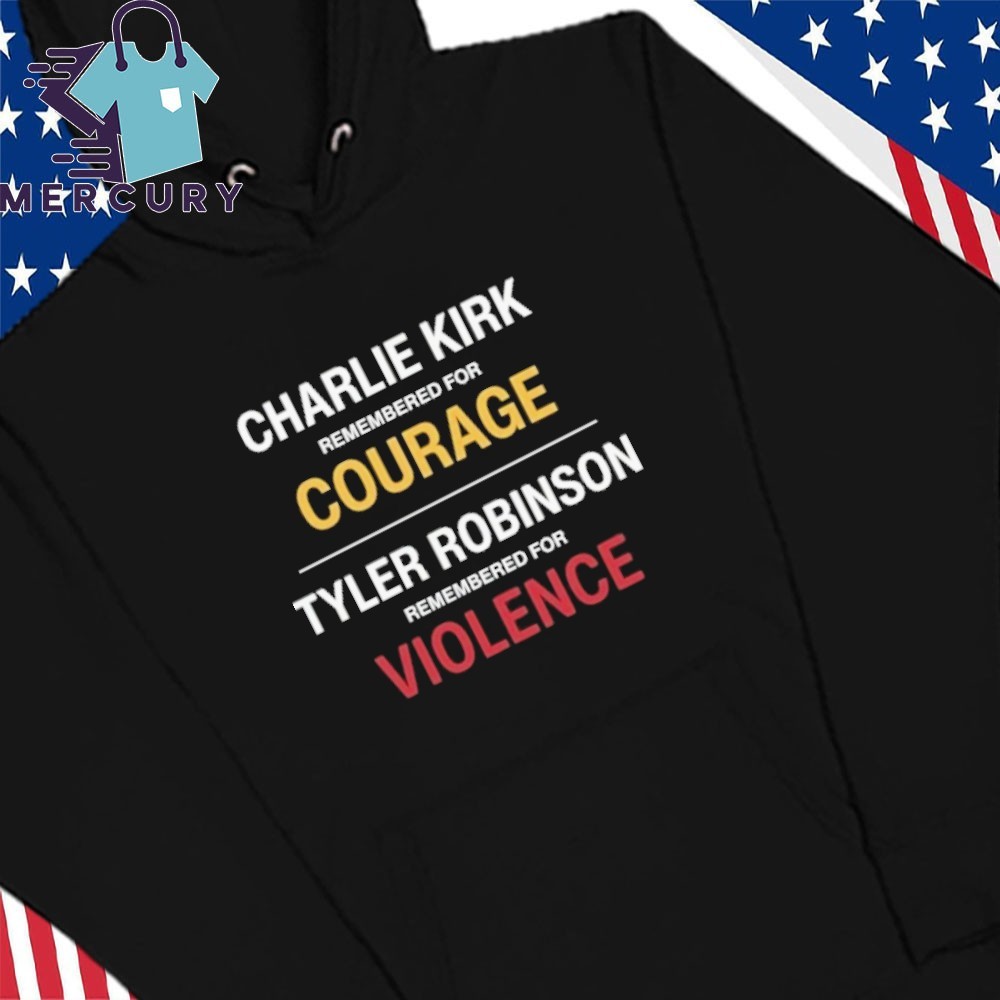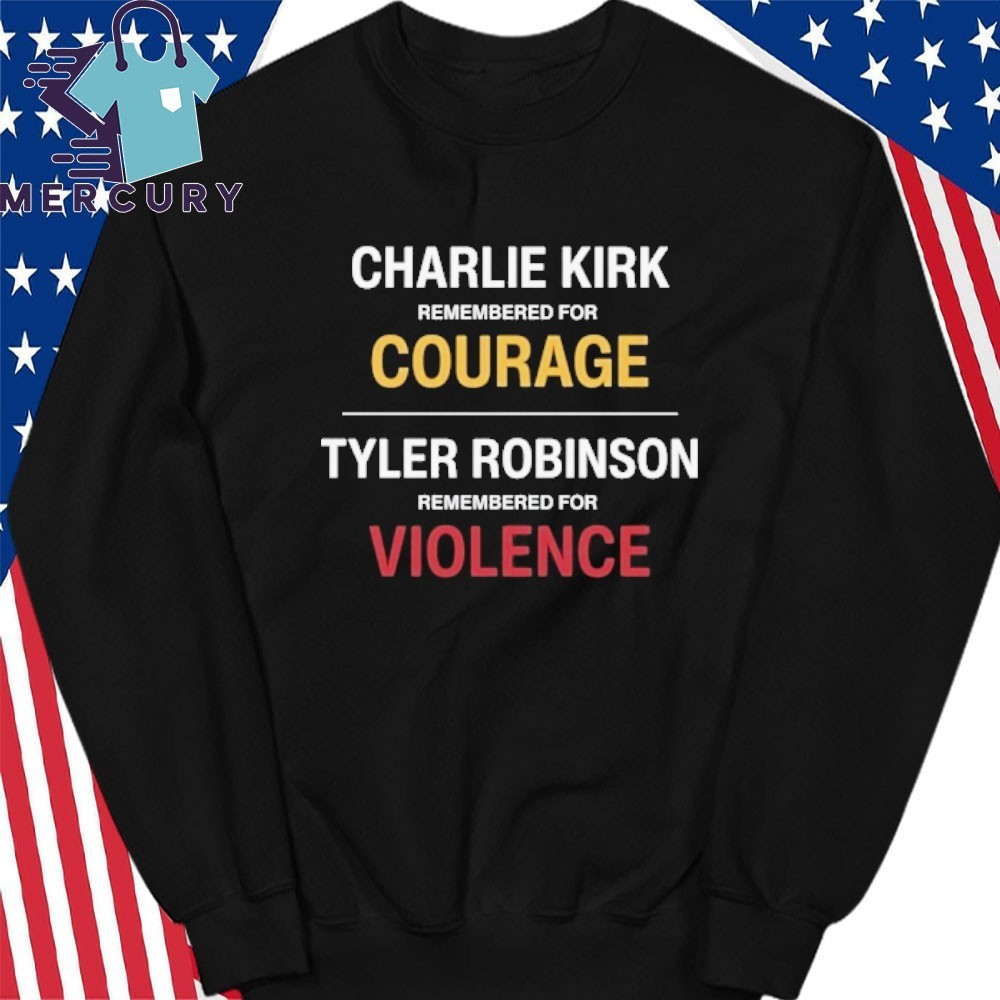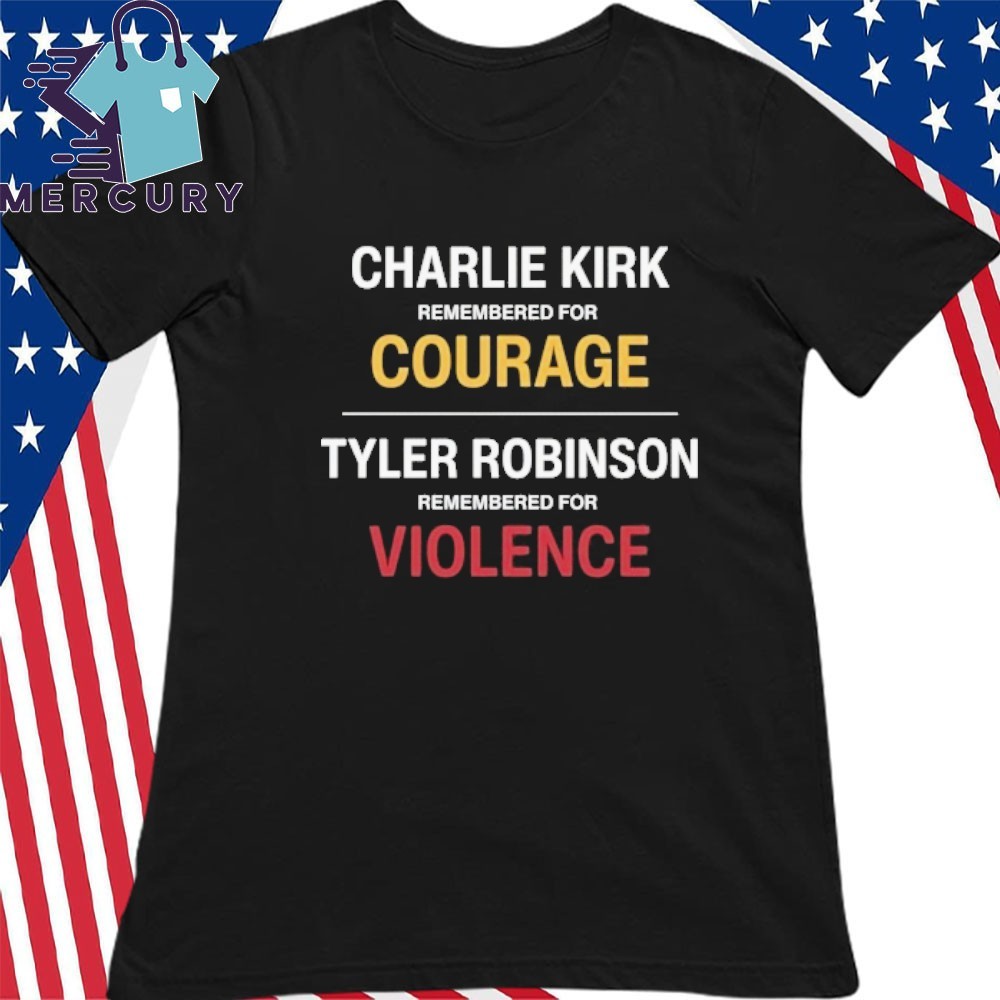The Charlie Kirk vs. Tyler Robinson Courage & Violence Shirt debate has fueled intense conversations among political enthusiasts and social commentators. From ideological battles to symbolic fashion, this confrontation encapsulates broader concepts of courage and violence—a visual and ideological arena. Understanding this intricate conflict can clarify how clothing, beliefs, and personalities influence modern public discourse.
If you wish to understand the Charlie Kirk vs. Tyler Robinson Courage & Violence Shirt, you must explore its foundational reasons, stylistic symbolism, and real-world implications. This article can serve as a guide to navigating the complex narratives within these figures’ clashes and the symbolic weight of their attire. Let’s get to the heart of this contentious conflict and observe how clothing becomes a medium for protest, power, and political messaging.
Before unpacking the symbolism of the Charlie Kirk vs. Tyler Robinson Courage & Violence Shirt, it’s crucial to understand the individuals and the context that have thrust this confrontational pairing into the limelight.
![]()
Charlie Kirk is a well-known conservative political commentator, the founder of Turning Point USA, and a staunch advocate for free speech and traditional conservative values. His messaging often highlights personal courage and resilience in the face of societal and political challenges. In contrast, Tyler Robinson has emerged as an opposing figure, often viewed through the lens of activism that challenges conservative narratives, focusing on themes of violence and social justice.
Their personalities represent a larger divide in American politics—one emphasizing individual courage and perseverance, the other highlighting systemic violence and resistance. Their interactions have made headlines, especially when their apparel or symbols, like the Charlie Kirk vs. Tyler Robinson Courage & Violence Shirt, become the focal points of debate.
The Charlie Kirk vs. Tyler Robinson Courage & Violence Shirt arose from various promotional campaigns, protests, and online discussions. It was designed to symbolize the ideological tension between the two figures: Kirk’s message of resilience versus Robinson’s critique of violence and systemic oppression. The shirt’s graphics and slogans serve dual purposes: to rally supporters and to act as a visual statement of ideological divides.
![]()
Despite the controversy, the shirt represents more than just an item of clothing—it is a declaration of belief systems. Its use in protests and social media showcases how apparel becomes a platform for political and social messaging, effectively turning clothing into a form of activism.
The Charlie Kirk vs. Tyler Robinson Courage & Violence Shirt had a significant impact on the public perception of both individuals. Supporters of Kirk see it as a badge of courage, resilience, and conservative pride, while opponents view it as propagating violence or mockery. This dichotomy illustrates how visual symbols can influence public opinion and stimulate broader societal conversations.
The intricate design elements of the Charlie Kirk vs. Tyler Robinson Courage & Violence Shirt carry potent messages, often intended to evoke emotional responses and symbolize larger ideologies.
Most versions of the shirt feature bold graphics with contrasting colors—red and black often symbolize violence and rebellion, while white and blue tend to evoke themes of courage and hope. Iconography such as fists, broken chains, or militaristic symbols may be incorporated to reinforce these ideas.
The slogans printed on the shirt often directly reference themes of courage—such as “Stand Tall” or “Resist”—or violence, perhaps through words like “Fight Back” or “Break the Silence.” The visual language ensures the message is immediately recognizable, sparking debate and polarization.
Clothing design plays a vital role in shaping ideological identities, and the Charlie Kirk vs. Tyler Robinson Courage & Violence Shirt is no exception. Supporters see it as a symbol of resilience in a chaotic world, while critics interpret it as provocative or even militaristic.
This design also functions as a form of social signaling, allowing individuals to identify with a particular movement or stance without needing verbal affirmation. It fosters a sense of community and shared purpose, which can deepen political divides but also strengthen camaraderie among supporters.
Clothing that embodies complex themes such as courage and violence acts as a narrative tool. It condenses ideologies into visual forms that are easily digestible, memorable, and impactful. As social commentators, it is crucial to analyze not just the design but its psychological effects—how it influences perceptions and encourages action.
The Charlie Kirk vs. Tyler Robinson Courage & Violence Shirt exemplifies how apparel can transcend individual identity to influence broader cultural and political movements.
When shirts like these become part of political rallies, protests, or social media campaigns, they reinforce certain narratives. For example, supporters view the shirt as a sign of standing up against perceived threats or oppression, thereby framing their activism under the banner of courage.
Conversely, opponents argue that such shirts incite violence or promote divisiveness, illustrating how clothing choices can stir controversy. The debate highlights the importance of understanding the power dynamics inherent in symbolic apparel—how it can either bridge divides or deepen them.
Social media platforms amplify the reach and influence of such apparel, turning the Charlie Kirk vs. Tyler Robinson Courage & Violence Shirt into an online phenomenon. Hashtags, memes, and viral campaigns spread the message rapidly, often polarizing audiences further.
The viral nature of these shirts reveals the intersection between fashion, political messaging, and digital culture. As a result, individuals must be aware of the implications of their clothing choices and how they contribute to larger societal narratives.
Clothing symbols like this shirt serve as markers of cultural identity—signaling allegiance, resistance, or protest. As political tensions escalate, such apparel will likely continue to serve as battlegrounds for ideological conflicts, emphasizing the importance of conscious design and messaging.
Understanding the significance of this shirt allows supporters and critics alike to navigate its use responsibly and thoughtfully.
Supporters should consider the message they intend to send. Wearing the shirt with awareness of its symbolic weight ensures that it aligns with their values and avoids unintended misinterpretation. For opponents, understanding the narrative behind it can foster dialogue or critique without resorting to hostility.
This type of apparel is suitable for protests, rallies, or social media campaigns where its message can be contextualized. Avoiding its use in settings where it might escalate tensions—such as in mixed or sensitive environments—demonstrates responsible activism.
Engaging with the Charlie Kirk vs. Tyler Robinson Courage & Violence Shirt constructively involves emphasizing dialogue over confrontation. Explaining the symbolism behind the shirt, listening to opposing views, and promoting respectful debate can transform divisive symbols into opportunities for education and understanding.
The Charlie Kirk vs. Tyler Robinson Courage & Violence Shirt embodies more than mere apparel—it is a visual battleground for ideological expressions concerning resilience and resistance. As a symbol, it influences perceptions, sparks debates, and embodies the ongoing cultural struggle within contemporary society. Recognizing its multi-layered significance helps individuals navigate the complex landscape of political symbolism, ensuring that clothing becomes a tool for meaningful discourse rather than division.
POSTER SEO_SIBATOOL